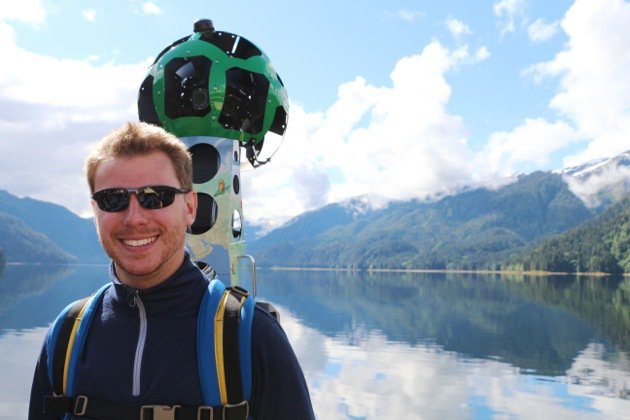
If you had to imagine your dream backpacking job, what would it be? Maybe it would involve something like this…
Google Trekkers in British Columbia
Last week, we learned from the web that Google Street View technology is heading out to the backcountry of British Columbia. Over the next 100 days, trekkers will hike with 40 lbs. of weight in cameras on their backs. These trekkers are known as Google Street View Trekkers. Their goal is to capture the ins and outs of this wonderful section of Canada. The cameras have 360 degree capabilities, that will provide viewers from around the world access to British Columbia’s wilderness. They’ll be able to see the rugged forests, high mountains, and beautiful lakes, straight from their computers at home.
The entire mission will cover 1,500 kilometers, and will take many months of hard work and collaboration. To get some help, Google is teaming up with Destination B.C. and the Northern B.C. Tourism Association. This trek is said to be one of the biggest tourist initiatives in the area to date. The project will hopefully lead to more visitors to the area, and we’ll have this unique technology to thank for it.

It’s no surprise that this entire project takes a team of skilled Google trekkers to be able to catch the images needed. It won’t be easy for them to lug all the weight through the uncharted forests of B.C. (Say goodbye to lightweight backpacking!) However, the volunteers know that the results of their hard work certainly “outweighs” the load they are carrying.
Even though these hikers are volunteers, this truly sounds like an incredible “job,” doesn’t it? Well, there are countless other backcountry regions of the world that will eventually need to be recorded as well. And, you can be one of the Google trekkers, just like these guys!
Do you have what it takes?
The first thing to understand about this job it that it’s not for everyone. In most potential Google Street View locations, the cameras can easily be attached to a car, and be driven through the area. However, when it comes to the wilderness, a car can of course not be used. So, Google needs to resort to passionate hikers like you, who can help collect images of these places.
If you think you’re up for it, then it’s not too hard to join a team (or one-person team) of Google trekkers. First thing on the list? You need to be visiting a backcountry location that is not yet documented under Google Street View. This destination also has to be located in one of Google’s 55 qualifying countries. If you find a place where street view is not yet available and falls under the list of qualified countries, then you’re almost there.
Next, you will need to find a partner or government agency to represent you. (Hence the amazing collaboration that’s going on in B.C. at the moment). Google isn’t going to just send out any random hiker out with expensive equipment out into the backcountry. Get yourself a tourism bureau or nonprofit to help you out, and you’ll increase your chances of being sent on one of these awesome missions.

Getting Your Cameras
Once you’ve determined that the area you’re going to is yours to conquer with Google Street View and you have some representation, then it’s time to contact Google so you can borrow one of their camera backpacks. This part is relatively simple, but might just take a little bit of patience. All you have to do is fill out an application. It’ll ask you some questions about how you plan to go about getting the images, whether or not you’ll have the permits to take those images, and if you’re going to help promote the images when your trek is complete. If everything checks out, then you could be ready to embark on your photography/trekking journey in no time! In some cases, you might even be eligible to receive sponsorship from Google for your trek. Sweet!
If you think that you’re up for a volunteer opportunity like this one, then it’s time to get moving! It won’t be long before our entire backcountry is up on Google Street View, and it would be great to help be a part of this amazing, technological initiative.













